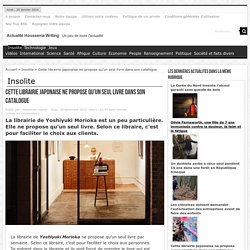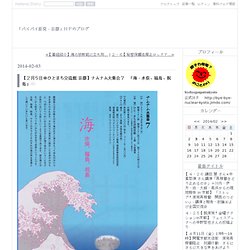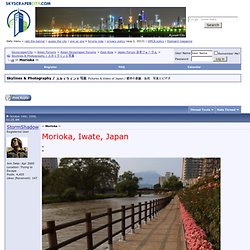

Sans titre. Almost 46 million people are trapped in modern-day slavery, two-thirds of them in the Asia-Pacific region, according to a study released Tuesday.

The Global Slavery Index for 2016 said an estimated 290,200 people in Japan, or 0.23 percent of the population, are in slave-like servitude. This includes people trafficked for sex work or trapped in debt bondage and forced labor. “There are concerning reports of involvement of highly organized crime in the Japanese sex industry, with well-established links for recruitment into sending countries such as Thailand,” said report author Fiona David of the Australia-based nonprofit Walk Free Foundation. The report also reflects long-standing allegations that a state-sponsored traineeship program locks foreign workers in unrewarding labor in Japanese industry and agriculture. It said Japan is among the richest nations doing the least about the problem within its borders. Voyage littéraire au Japon: Les librairies de Tokyo. Kengo Kuma Architecture Guide Tokyo 2016 ⋆ ArchEyes. Kengo Kuma Architects & Associates has released their own Architecture Guide of Tokyo featuring all the construction where KKAA’s office has intervened.

The guide samples 42 buildings of KKAA. Kengo Kuma recently won the competition for the Tokyo Olympic Stadium 2020. National Gymnasium for Tokyo Olympics / Kenzo Tange ⋆ ArchEyes. As in the past, with the Yoyogi National Gymnasium Kenzo Tange continues to stimulate the creative possibilities of the architecture of our times.

Designed and built between 1961 and 1964 to house swimming and diving events in the 1964 Summer Olympics, the design inspired Frei Otto’s arena designs for the Olympic Stadium in Munich. Architects: Kenzo TangeLocation: Tokyo, JapanProgram : Sports Facilities / StadiumEngineers Yoshikatsu Tsuboi and Uichi Inoue.References : DomusWebProject Year : 1964Site area: 91,000.00㎡Total floor area: 34,204.00㎡Height: 40.37m (First Gymnasium) – 42.29m (Second Gymnasium)Photographs: Flickr User: Jamie Barras / Domus Archive The biggest problem, with respect to the interior space, was guaranteeing that it not take on inhuman proportions when empty or filled with just a few people.We wanted to create and maintain a unified environment where athletes and spectators share growing mutual emotion. Hand-colored photos capture Japanese life in the 1890s. SEALDs student group reinvigorates Japan's anti-war protest movement.
Wearing shorts and a baggy T-shirt and clutching a microphone, Aki Okuda stands before a crowd, the pyramid-shaped roof of the Diet building lit up against the night sky behind him.

Notification You’ve reached your story limit as a non-registered user. To read more, please sign up or log in via one of the services below. YUKATA japonais d'homme en coton bordeaux.
★ Itô Noé (1895-1923), une féministe anarchiste au Japon - Socialisme libertaire. Il y a à peine un siècle, dans un Japon qui se modernise sur le modèle occidental, apparaissent en même temps le capitalisme, l’anarchisme et le féminisme.

Itô Noé fait partie de ces pionnières qui osent contester l’ordre impérial et patriarcal. Sa vie illustre le parcours difficile de cette jeune génération qui tente de vivre librement dans une société autoritaire. Itô Noé naît en 1895 dans le village d’Imajuku dans le département de Fukuoka, au sud du Japon, dans un Japon en ébullition culturel et idéologique, qui sort à peine du féodalisme. Cette librairie japonaise ne propose qu'un seul livre dans son catalogue. La librairie de Yoshiyuki Morioka ne propose qu’un seul livre par semaine.

Selon ce libraire, c’est pour faciliter le choix aux personnes. Uchujin / Adrian Storey Show reel 2015 - Uchujin -The Blog. Tanuki Raccoon Dog Plush Doll by kaijumama on DeviantArt. Children's Day in Japan and Koinobori Song. Children's Day May 5 is Japan's national holiday known as, Kodomo no hi 子供の日 (Children's day).

It is a day to celebrate the health and happiness of children. Until 1948, it was called, "Tango no Sekku (端午の節句)", and only honored boys. Although this holiday became known as, "Children's Day", many Japanese still consider it a Boy's Festival. On the other hand, "Hinamatsuri (ひな祭り)", which falls on March 3rd, is a day to celebrate girls.
To learn more about Hinamatsuri, check out my article, "Hinamatsuri (Doll's Festival)". Guide voyage pratique au Japon. Art Ludique - Le Musée. TOYOTOWN トヨタウン. La vie après Fukushima – Japon nord-est.
【2月5日@ひとまち交流館 京都】ナムナム大集会7 「海・水俣、福島、祝島」 - 「バイバイ原発・京都」HPのブログ. 【2月5日@ひとまち交流館 京都】ナムナム大集会7 「海・水俣、福島、祝島」 ナムナム大集会7 「海・水俣、福島、祝島」 フェイスブック・イベントページ 今年もナムナム大集会実行委員会から、ナムナム大集会7の開催の案内が届きました。

案内状の全文を以下に転載します。 3・11東日本大震災、原発事故以降、この国のありかたが様々な形で浮き彫りになってきました。 「海に漏れ出した汚染水は完全にコントロールされています」この安倍首相の言葉の後にオリンピックが東京で開催されることが決定し、その騒ぎによって「福島では夏休みに海で遊ぶという当たり前のことができないのです」というお母さんのつぶやきはかきけされようとしています。 Politically incorrect. No beginning,No end.Our mindis born and dies:The emptiness of emptiness!

Morioka. Morioka, Iwate, Japan Kawara Bridge Nakatsu River German Reformed Church.

Essential movie, comic, DVD & TV news : Seven Films by Yasujiro Ozu. I just received this from the exceptionally cool cats at Madman Entertainment, based in my hometown of Melbourne, Australia – and it’s worthy of its very own article, which is why I’ve penned this piecemeal overview. So what the heck am I actually on about? Well, I may be in the midst of a particularly insane flu/virus that’s knocked my socks off over the past week – deliriously dreaming up stuff like a talking octopus that was my pet, and a downright cool one at that; I doubt I can eat octopus sushi again for a bit. Anyway, dragging my medicine-addled brain back on track, I’m talking up Madman’s new Directors Suite box set Seven Films by Ozu Yasujiro, just released at the end of last year and an essential addition to any fledging fan of Japanese cinema since it includes not just his most famous film Tokyo Monogatari (Tokyo Story, 1953), but six other Ozu gems – along with documentaries galore, including one by Wim Wenders.
So who exactly was this Ozu character, and why should we care?